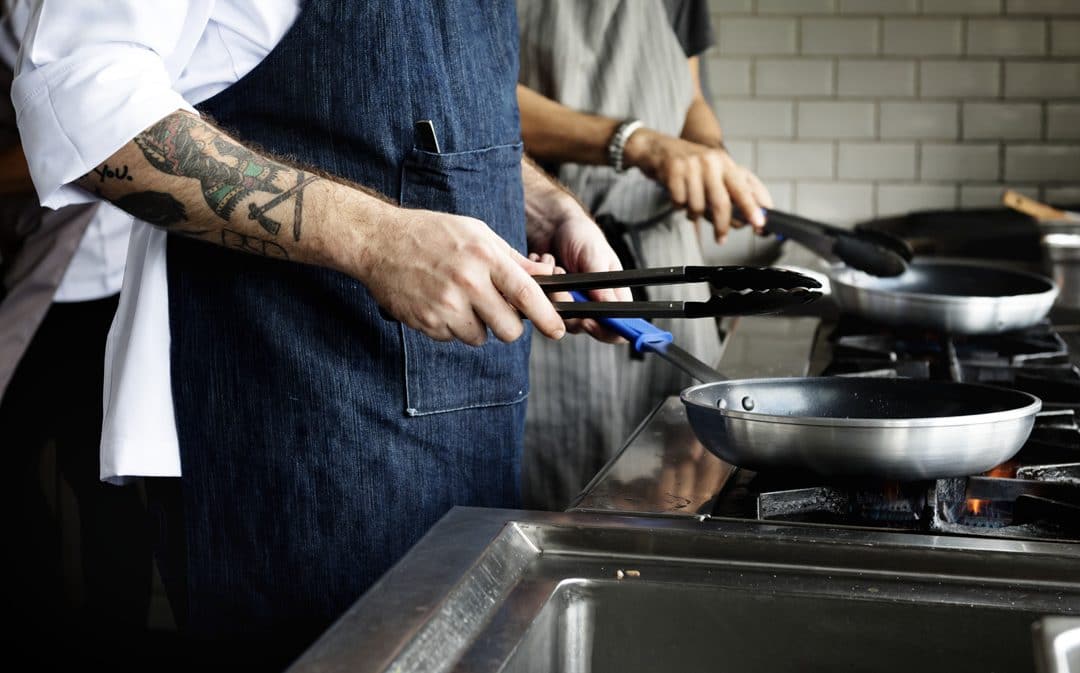The concept of dark kitchen is a new restaurant model that has been on the rise since the COVID-19 crisis, which gave it a big boost. But what is it exactly?
Table of Contents
What is a dark kitchen?
A dark kitchen (also called cloud kitchen, ghost kitchen, or ghost restaurant) is a “virtual” restaurant, without seating, which only does delivery .
These new kinds of restaurants are aimed at a clientele of employees who have little time to eat, or even young people, who are used to ordering online.
What are the advantages of a dark kitchen?
Cheaper
For restaurateurs, creating a dark kitchen can save a lot of money.
First of all, for the local. No need to search for the right location in town for the business! All you need is a location containing a kitchen, a cold room and enough space to accommodate the staff. It is possible to settle on the outskirts of cities.
And there is less staff to plan for, since there are no servers.
In addition, the menu is rather limited: dark kitchens mainly offer “street food” type catering, such as pizzas, sushi, and burgers, but that could change.
For all these reasons, it is estimated that opening a dark kitchen costs at least 6 times less than opening a classic restaurant.
However, once the business is launched, it is necessary to count the transfer of a significant percentage of revenues to the platforms, which generally amounts to between 20% and 35%.
More flexible
Dark kitchens can easily follow trends and try out new specialties and fill a gap in a local offering.
Use a shared kitchen
It is possible to create your dark kitchen in a shared kitchen. Concept inspired by coworking, these are large professional kitchens fully equipped to be shared by several restaurateurs, such as here or here . Restaurant owners simply have to rent the location, then settle in with their employees, their recipes and their brand.
The delivery platforms have even created shared kitchens themselves.
The shared kitchens also offer additional services: central purchasing, cleaning service, etc.
Digital tools to develop a dark kitchen
In the world of FoodTech, digital tools are developing at high speed to help dark kitchens achieve 3 objectives: more volume, profitability, and ease!
Order taking tools
Dark kitchens make themselves known and mainly sell their dishes thanks to online ordering platforms, like Deliveroo , Just Eat , or Uber Eats .
But it is also possible to create your ordering and Click&Collect website with a tool such as LivePepper .
Management tools
The other big advantage of running a dark kitchen over a traditional restaurant is that you don’t need to have a POS software.
However, a dark kitchen must optimize everything to generate maximum turnover, and for that it needs to:
- Have good visibility on the platforms
- Centralize all your orders in one place
- Have advanced statistics
- Be able to manage your catalog easily
- Produce as quickly as possible
- Inform platform deliverers
- Manage your accounts
There are two essential solutions for this without the need for a POS :
- A platform that allows dark kitchens to manage multiple online order taking channels, and to manage their catalog. There are 2 players on the market: Deliverect and HubRise .
- A KDS (Kitchen Display System) or kitchen production screen system that will enable virtual kitchens to post their orders, to manage them and to inform the deliverers who wait.
Be careful, however, that the KDS is 100% compatible and integrated with Deliverect or HubRise, otherwise the system will not be able to receive all the orders from platforms such as Deliveroo, Just Eat, Uber Eat and all the order taking systems.
Conclusion
This new type of restaurant, which is doing well during the crisis, can scare and stir up criticism from traditional restaurateurs. However, this concept does not offer all the same experience as traditional dining in the dining rooms and does not meet the same needs. This is a complementary format. In addition, many traditional restaurants have created their own dark kitchen, which has allowed them to continue their activity during the sanitary restrictions.

